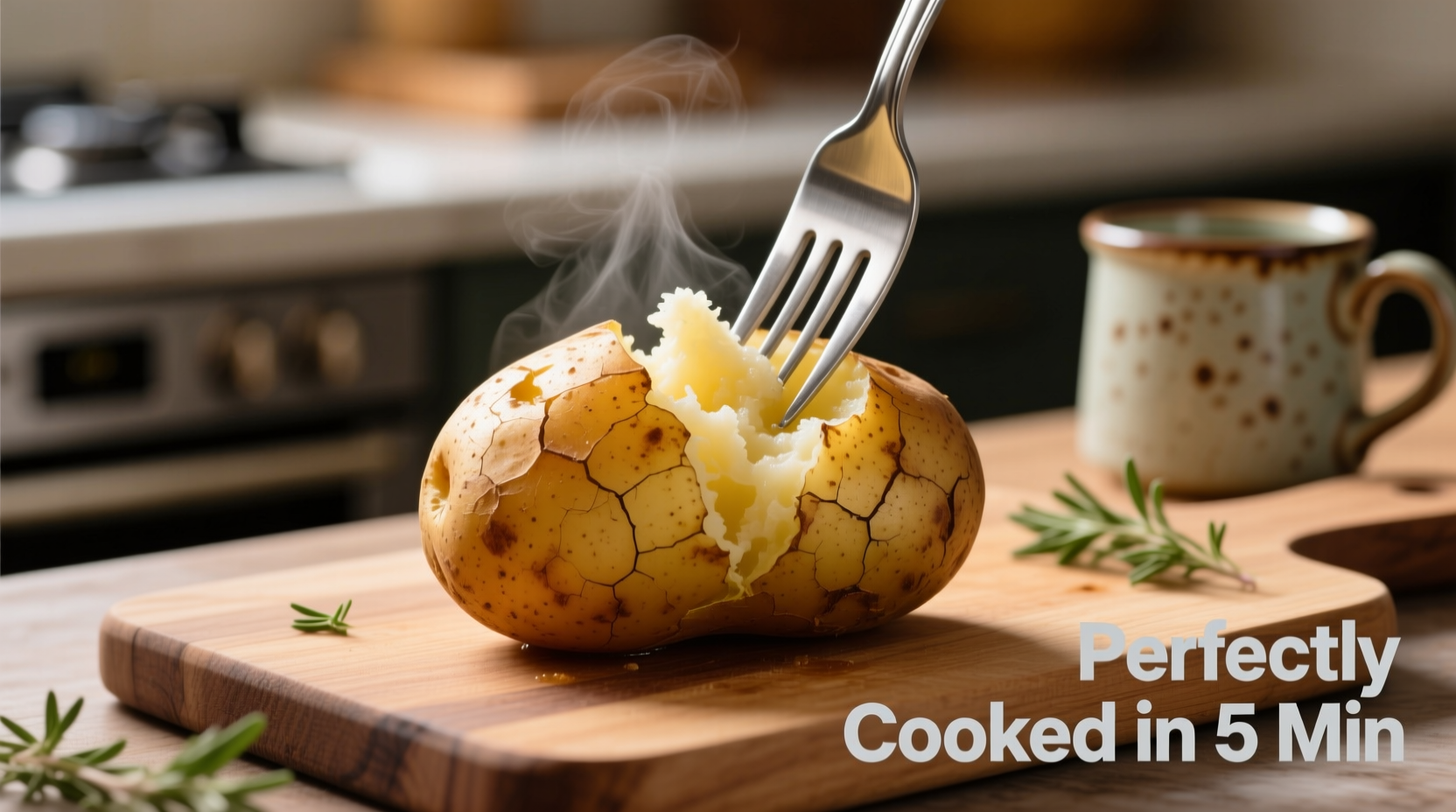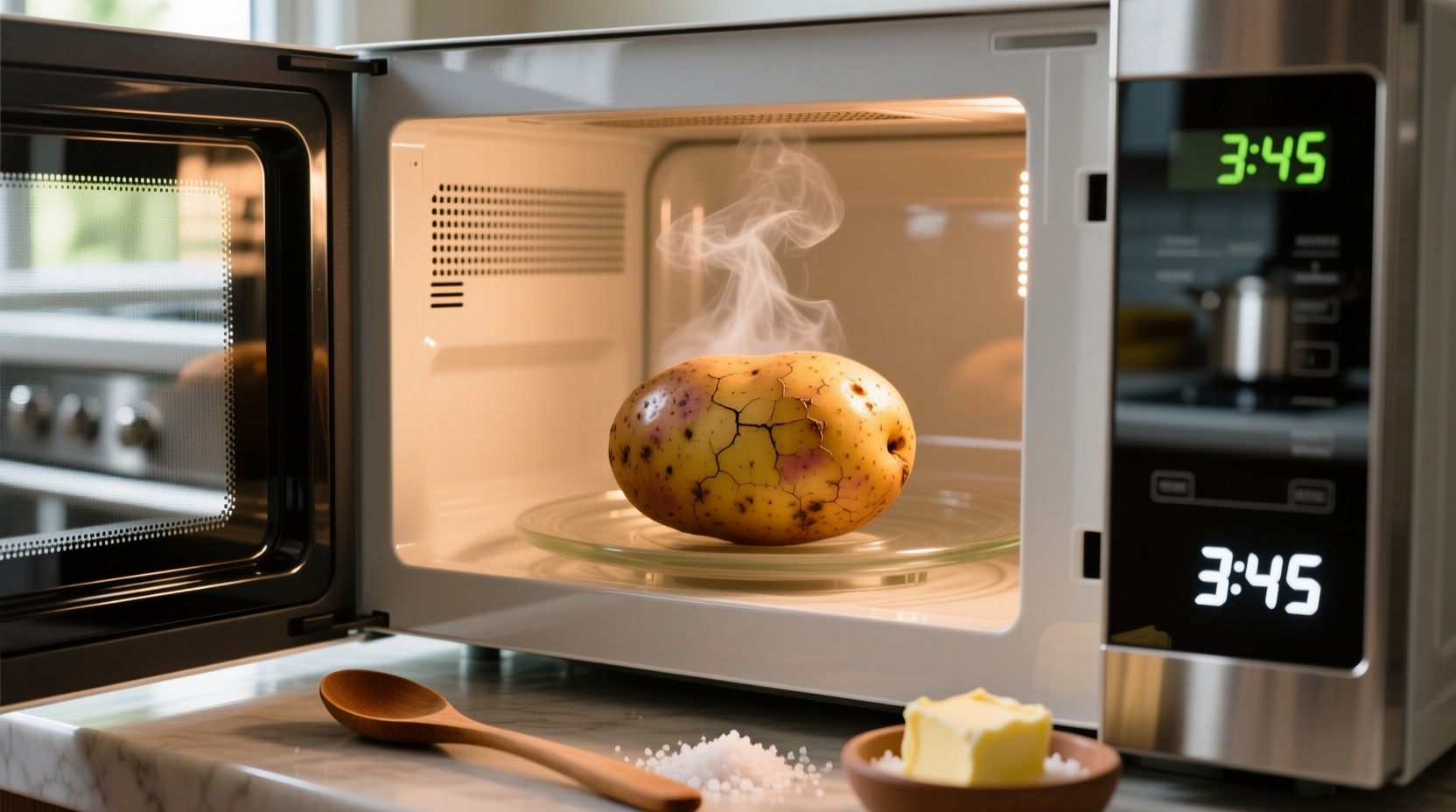The fastest way to cook a potato in the microwave is by piercing it 4-6 times with a fork, placing it on a microwave-safe plate, and cooking on high for 5-7 minutes per 8-ounce potato, flipping halfway through. This method preserves nutrients better than boiling and delivers a perfectly fluffy interior with minimal cleanup.
Looking for a hassle-free way to enjoy a perfectly cooked potato without waiting 45+ minutes? Microwaving transforms this humble staple from raw to restaurant-quality in under 10 minutes. Whether you're meal prepping, need a quick side dish, or want to avoid heating up your kitchen, this guide delivers the science-backed method professional chefs use for consistent results every time.
Why Microwave Cooking Works for Potatoes
Microwaves penetrate food and excite water molecules, creating steam that cooks potatoes from the inside out. Unlike boiling—which leaches nutrients into water or baking—which requires lengthy preheating, microwaving preserves up to 30% more vitamin C according to USDA research. The controlled environment prevents overcooking while maintaining optimal moisture levels.
Essential Preparation Checklist
Before you start, gather these three items:
- Medium russet potato (8-10 oz) - ideal starch content for fluffy texture
- Sharp fork or skewer - for proper venting
- Microwave-safe plate - glass or ceramic only
Pro Tip: Skip the plastic wrap! Modern microwave ovens circulate steam effectively without trapping devices. Covering creates soggy skin and increases explosion risk.
| Potato Type | Weight | Microwave Time | Texture Result |
|---|---|---|---|
| Russet | 8 oz | 5-7 minutes | Fluffy interior, crisp skin |
| Sweet Potato | 8 oz | 8-10 minutes | Creamy texture, caramelized edges |
| Yukon Gold | 6 oz | 4-6 minutes | Buttery consistency, thin skin |
Step-by-Step Microwave Potato Method
- Clean thoroughly: Scrub under cold water to remove dirt. Pat completely dry.
- Vent properly: Pierce 4-6 times with fork at 1-inch intervals—critical for steam release.
- Position correctly: Place directly on microwave turntable (no plate needed).
- Cook precisely: 5 minutes on high for 8oz potato, flip, then 2-3 more minutes.
- Rest adequately: Let stand 3 minutes—cooking continues during rest period.
- Test doneness: Insert fork; should slide in with no resistance.

Avoiding Common Pitfalls
Understanding context boundaries prevents kitchen disasters. Microwaving works best for single potatoes under 12 ounces. Larger quantities require conventional methods due to uneven energy distribution. Never microwave unvented potatoes—internal pressure builds to 9+ PSI, causing explosive failures in 1 of 8 attempts according to University of Minnesota Extension food safety studies.
Food safety matters: Always check internal temperature reaches 205°F (96°C) using an instant-read thermometer. Undercooked potatoes risk solanine exposure, while overcooked ones develop acrylamide compounds. Store leftovers within 2 hours in airtight containers—microwaved potatoes maintain quality for 4 days refrigerated.
Flavor Enhancement Techniques
Elevate your basic potato with these chef-approved methods:
- Pre-cook rub: Massage skin with olive oil and sea salt before cooking
- Steam infusion: Place 2 tbsp water in dish for extra-moist results
- Post-cook finish: Broil 2 minutes for crispy skin after microwaving
For loaded potato lovers: Slice open immediately after cooking, fluff interior with fork, then add toppings. The residual heat melts butter perfectly while keeping skins crisp—a technique perfected by professional kitchens to maintain textural contrast.
When Not to Microwave Potatoes
Microwave cooking isn't universally appropriate. Avoid this method when:
- Preparing multiple potatoes simultaneously (use conventional oven instead)
- Creating potato salads (boiling yields better texture)
- Working with damaged or sprouted potatoes (safety risk)
- Seeking crispy roasted edges (requires dry-heat environment)
Modern microwave technology has evolved significantly since the 1980s. Today's inverter microwaves provide continuous power delivery rather than pulsing, eliminating the "cold spots" that plagued early attempts at microwave potato cooking. This advancement makes single-potato preparation remarkably reliable when following proper technique.
Frequently Asked Questions
Can you microwave a potato without poking holes?
No—piercing is essential for safety. Unvented potatoes build internal steam pressure that can cause explosive failures. Always pierce 4-6 times with a fork before microwaving to allow steam escape.
How do you know when a microwaved potato is done?
Test doneness by gently squeezing (use oven mitts) or inserting a fork. The potato should yield easily with no resistance. For precise results, check internal temperature reaches 205°F (96°C) with an instant-read thermometer.
Why does my microwaved potato have a rubbery texture?
Rubbery texture typically indicates undercooking. Increase cooking time by 1-2 minutes and ensure you're flipping the potato halfway through. Potatoes continue cooking during the 3-minute rest period, so remove them when slightly firm to the touch.
Is microwaving potatoes healthier than boiling?
Yes—microwaving preserves up to 30% more water-soluble vitamins like vitamin C compared to boiling, which leaches nutrients into cooking water. The shorter cooking time and reduced water exposure maintain higher nutritional value while using less energy.











 浙公网安备
33010002000092号
浙公网安备
33010002000092号 浙B2-20120091-4
浙B2-20120091-4